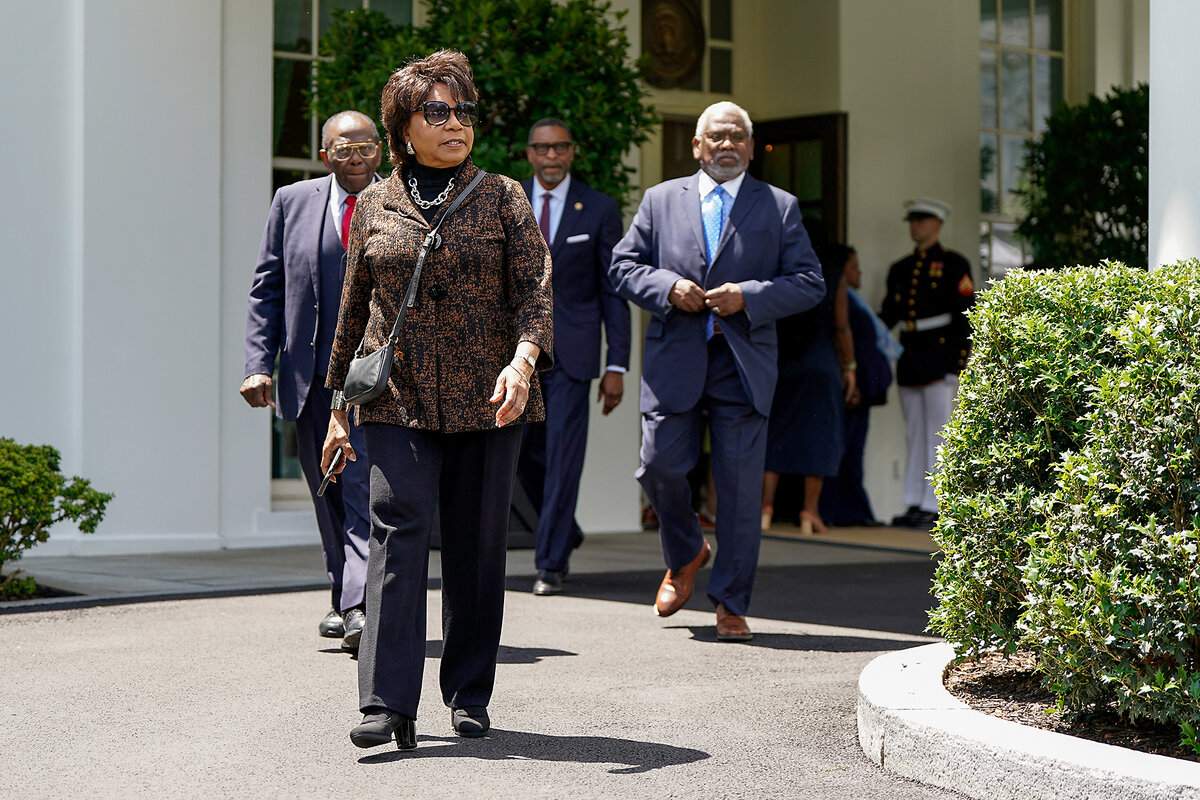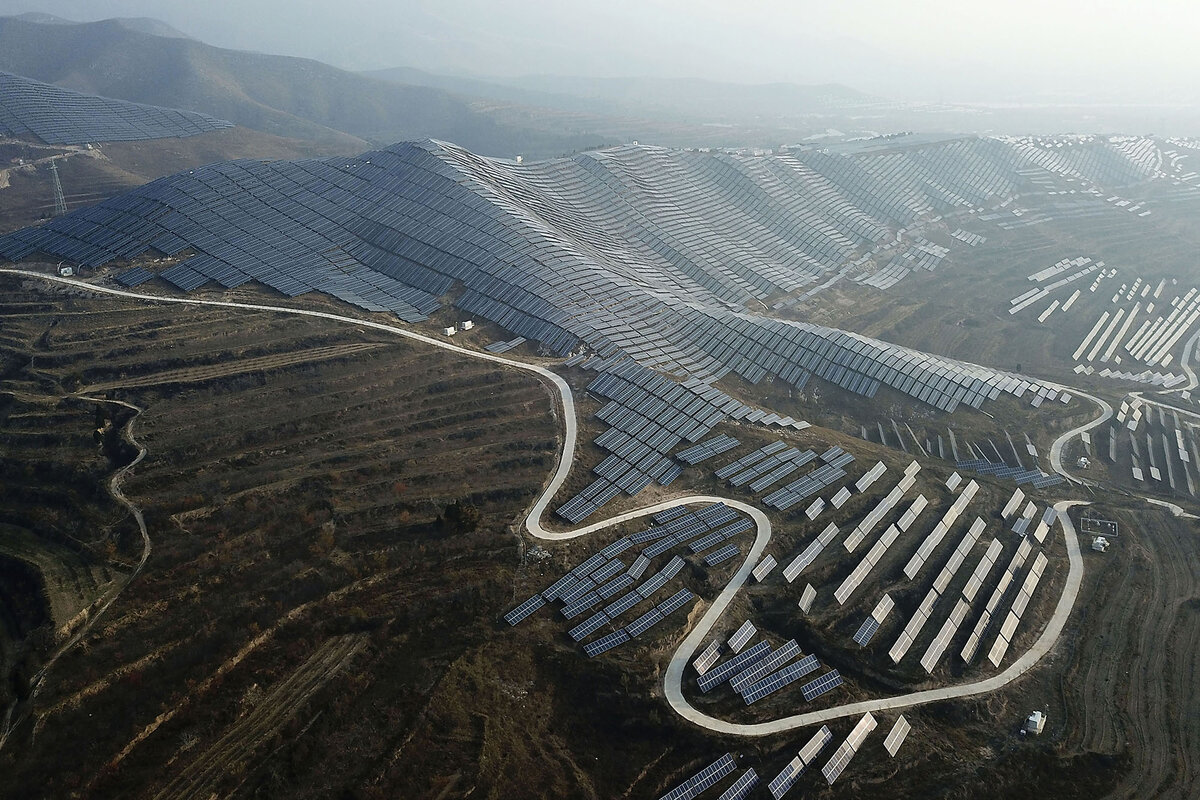China’s booming renewable energy industry may be stirring trade tensions, but it could also accelerate a green transition – in China and elsewhere.

Why is Christian Science in our name?
Our name is about honesty. The Monitor is owned by The Christian Science Church, and we’ve always been transparent about that.
The Church publishes the Monitor because it sees good journalism as vital to progress in the world. Since 1908, we’ve aimed “to injure no man, but to bless all mankind,” as our founder, Mary Baker Eddy, put it.
Here, you’ll find award-winning journalism not driven by commercial influences – a news organization that takes seriously its mission to uplift the world by seeking solutions and finding reasons for credible hope.
Explore values journalism About usMonitor Daily Podcast
- Follow us:
- Apple Podcasts
- Spotify
- RSS Feed
- Download
 Amelia Newcomb
Amelia Newcomb
Readers of Ken Makin’s columns are familiar with his deep appreciation of history. Today, he reminds us of key players in making that history: everyday actors.
Take Brown v. Board of Education, the landmark case that overturned segregation in U.S. schools and is marking its 70th anniversary. As Ken writes, the work of Thurgood Marshall, who argued the case before the U.S. Supreme Court and would later become its first Black justice, still “rings in history books.” But lesser-known champions helped lay the foundation for that moment – offering models for all of us in the power of stepping up, both to drive progress and to protect it.
Already a subscriber? Log in
Help fund Monitor journalism for $11/ month
Monitor journalism changes lives because we open that too-small box that most people think they live in. We believe news can and should expand a sense of identity and possibility beyond narrow conventional expectations.
Our work isn't possible without your support.
Today’s stories
And why we wrote them
( 4 min. read )
Today’s news briefs
• Israeli hostages: The Israeli military says its troops in Gaza found the bodies of three hostages. All three were killed by Hamas while fleeing the Nova music festival, according to a spokesperson.
• Dow record: The Dow Jones Industrial Average topped 40,000 on May 16, an all-time high. The S&P 500 crossed above its milestone on May 15, topping 5,300 points for the first time.
• Severe storms: Houston’s mayor reports at least four people died in storms May 16. The fast-moving weather system also hit neighboring Louisiana and left more than 215,000 customers there without power.
• Weapons testing: Suspected short-range ballistic missiles are fired off North Korea’s east coast May 17, a day after South Korea and the United States flew fighter jets in a drill North Korea views as a security threat.
• Texas pardon: Gov. Greg Abbott, citing a “stand-your-ground” self-defense law, granted a full pardon May 16 to a former U.S. Army sergeant and Uber driver sentenced to 25 years in prison for fatally shooting a Black Lives Matter protester.
( 10 min. read )
Overall, experts say election-related fraud in the United States is extremely rare. And safeguards are in place for mailed ballots. Yet distrust in the system remains high among Republican voters.
Monitor Breakfast
( 4 min. read )
At a Monitor Breakfast, Democratic Rep. Suzan DelBene of Washington state talks about the value of different perspectives and her party’s chances to retake the U.S. House this fall.
Commentary

( 5 min. read )
On the 70th anniversary of the Brown v. Board of Education decision, our commentator weighs the promise that decision still offers for students against the realities of what their schools look like today.
Podcast

Black expectant mothers need allies. We found some helpmates resurging.
History and experience have left some Black women in the United States feeling underserved by the medical system when it comes to maternal health. Can birth doulas help restore a sense of agency and control? Our writer explored that question, then joined our podcast to discuss what he learned.
Where Black Women Reclaim Power
In Pictures
( 2 min. read )
Spring is a time of rejuvenation. The Earth may be slow to warm in the Arctic, but the Sami people find renewal in their faith.
The Monitor's View
( 2 min. read )
Remember Lynette Woodard? How about Katherine Johnson or Nona Gaprindashvili?
Limit-shattering women too often require male reference points to lodge in public thought. Ms. Johnson is to Albert Einstein in physics as Ms. Gaprindashvili is to Garry Kasparov in chess. Yet that may now be about to change. The reason: the star-bursting arrival of what already looks like a paradigm-shifting cultural phenomenon.
Google it. The Caitlin Clark effect.
The most talked-about athlete in America right now is female. Caitlin Clark strode into the Women’s National Basketball Association this week clothed in superlatives. The highest scorer – male or female – in the history of the NCAA. The No. 1 draft pick.
Her impact on the court draws comparisons to male players. She shoots 3-pointers like Steph Curry. Yet her “effect” resides more off the court, in the power of sport to promote equality through new views of human achievement and the universal qualities that enable it.
“There is something that happens in the way that men view women when women are seen to perform under pressure at a really high level physically,” said sports columnist Sally Jenkins in a Washington Post podcast following Ms. Clark’s home opener in Indiana on Thursday night. “There’s a credibility. ... That physical competency and emotional competency under pressure, it makes it easier for men to envision women driving aircraft carriers on a midnight shift.”
Ms. Clark follows a handful of pioneering women who used their athletic prowess to compel social change. Tennis great Billie Jean King and soccer star Megan Rapinoe championed human dignity in their advocacy for equal pay and LGBTQ+ rights. Serena Williams and gymnast Simone Biles broke racial barriers and voiced compassion for those struggling with mental health.
Now comes Ms. Clark. She is already changing the economics of the game by forcing scrutiny on the unequal salary structures of men’s and women’s professional basketball. Branding and ticketing companies are changing their business models to accommodate skyrocketing demand. Leadership experts are studying her game for new insights into what brings success.
More importantly, as Ms. Jenkins noted, she is erasing the notion that athletic excellence has different levels based on gender. She is “one of the best college basketball players to ever play,” Patrick Mahomes, quarterback for the Kansas City Chiefs, posted on X back in February. In a poll by The Athletic last month, players in the NBA, the men’s top league, ranked Ms. Clark their second-favorite athlete in any other professional sports league, male or female. They didn’t stop there. Five other female basketball players earned votes – and respect – from their male counterparts.
Back to Lynette Woodard. For more than 40 years before Ms. Clark came along, she was the top-scoring female college basketball player of all time. She was often remembered in the same sentence with the men’s top scorer, Pete Maravich. Now she is compared to the woman who broke her record. Perhaps one day, the next Steph Curry will be called the Caitlin Clark of his generation.
A Christian Science Perspective
Each weekday, the Monitor includes one clearly labeled religious article offering spiritual insight on contemporary issues, including the news. The publication – in its various forms – is produced for anyone who cares about the progress of the human endeavor around the world and seeks news reported with compassion, intelligence, and an essentially constructive lens. For many, that caring has religious roots. For many, it does not. The Monitor has always embraced both audiences. The Monitor is owned by a church – The First Church of Christ, Scientist, in Boston – whose founder was concerned with both the state of the world and the quality of available news.
( 4 min. read )
A spiritual view of life shows us it’s always possible to express healing compassion toward others.
Viewfinder

A look ahead
We hope you’ve enjoyed the Monitor Daily this week. On Monday, keep an eye out for Anna Mulrine Grobe’s piece about how, as Russia’s Kharkiv offensive has stepped up, calls are increasing for the United States and other countries to lift their restrictions on Ukraine using its long-range missiles to hit Russian territory.







